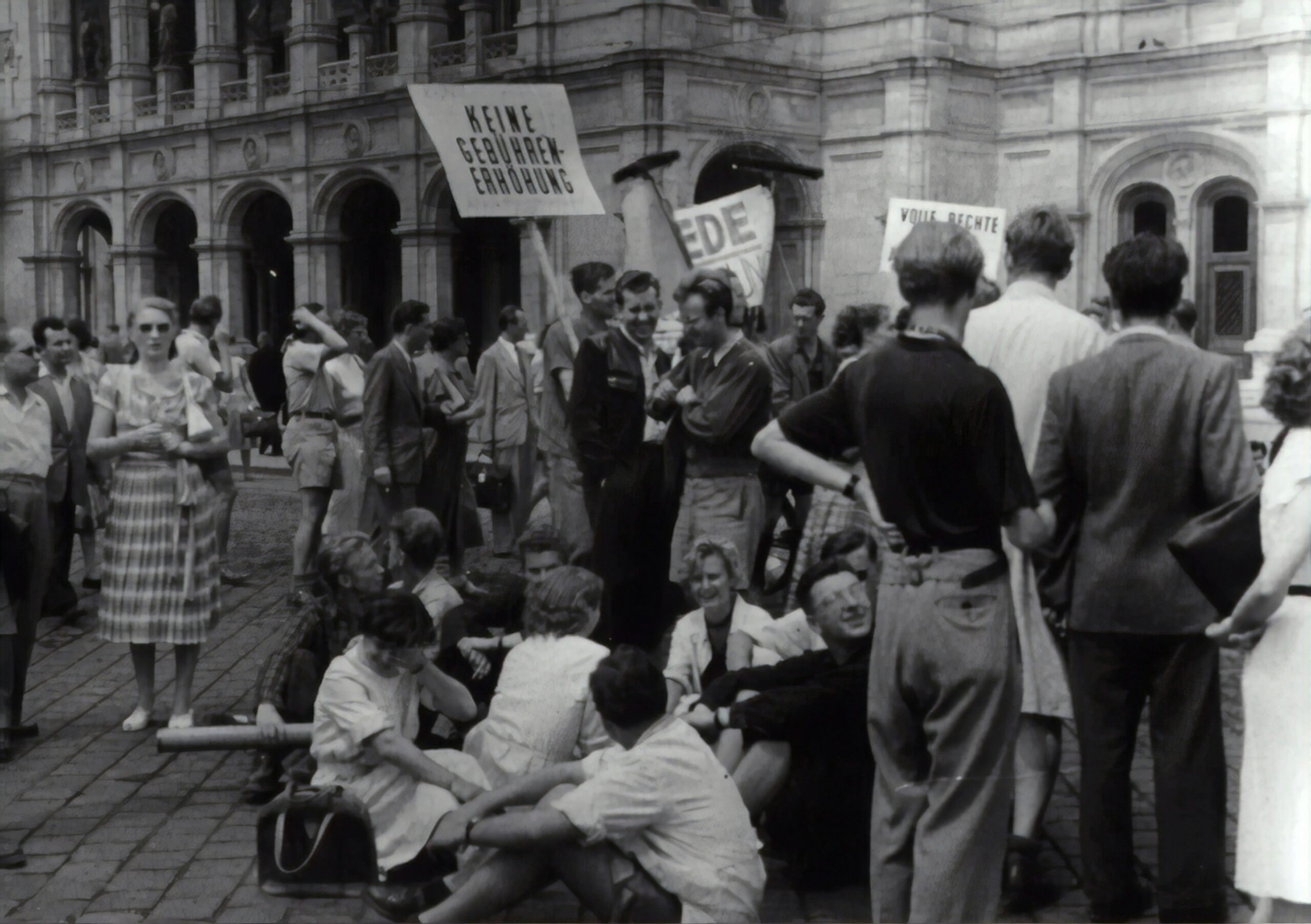Introduction: A Scandal that Changed History
The Monica Lewinsky scandal emerged as one of the most notable political events of the late 1990s, leaving an indelible mark on American history. At the center of this controversy was Lewinsky, a young intern at the White House, whose affair with then-President Bill Clinton ignited a media frenzy that transcended politics and permeated the cultural landscape. This scandal did not merely capture the headlines; it resembled a cultural phenomenon that fundamentally altered perceptions of both political leadership and personal ethics.
Lewinsky’s involvement in the scandal was met with a myriad of public reactions. Initially, she was portrayed overwhelmingly in a negative light, reduced to a symbol of moral failure and scandalous behavior. This scrutiny was not exclusive to her; it also reflected the broader societal attitudes towards women, particularly those who found themselves entangled in high-profile affairs. In an age where media sensationalism was at its peak, Lewinsky became a case study in the complexities of gender, power, and public perception. The ramifications of this scandal extended beyond Lewinsky’s personal life, effectively reshaping the political landscape of the time.
The fallout from the affair led to impeachment proceedings against Clinton, further complicating the public’s understanding of the events. In the years that followed, Lewinsky transitioned from a mere footnote in political discourse to a prominent advocate for anti-bullying and social change, leveraging her experience to address crucial issues such as online harassment and the consequences of public shame. As we explore the enduring legacy of Monica Lewinsky, it becomes evident that the scandal not only transformed her life but also served as a catalyst for broader discussions surrounding women’s rights, societal standards, and the complexities inherent in power dynamics.
Early Life and Background: Who is Monica Lewinsky?
Monica Lewinsky was born on July 23, 1973, in San Francisco, California, to a middle-class Jewish family. Her parents, both well-educated, played a significant role in shaping Lewinsky’s character and aspirations. She was raised in a nurturing environment that prioritized education and social engagement, values that became cornerstone aspects of her identity. The family later moved to Los Angeles, where Lewinsky spent her formative years, developing a keen interest in public affairs and politics.
Her educational journey began at the prestigious John Thomas Dye School, followed by high school at Beverly Hills High School, where she was noted for her intelligence and leadership potential. Monica’s early engagement with debate clubs and student government highlighted her growing fascination with political discourse and civic engagement. After graduating high school, she pursued higher education at Lewis & Clark College in Portland, Oregon. Here, she earned a Bachelor of Arts degree in psychology, enriching her understanding of human behavior and social dynamics.
Throughout her academic journey, Lewinsky demonstrated a strong drive and ambition. She was actively involved in various extracurricular activities, including the college’s theatre and community service initiatives, which helped refine her communication skills and foster a sense of social responsibility. Her time in college was a period of personal growth, where she honed her passion for advocacy and a desire to make an impact within society.
These early experiences laid the groundwork for her future involvement in high-stakes political environments. They not only contributed to her professional aspirations but also prepared her to navigate the complexities of public life, ultimately shaping the trajectory of her later experiences in the political arena. Lewinsky’s early life reflects a rich tapestry of influences, demonstrating the qualities that formed her as a person before she became a figure embroiled in one of the most publicized scandals in modern history.
The Scandal: A Timeline of Events
The affair between Monica Lewinsky and President Bill Clinton, which captured the attention of the nation and the world, began in the mid-1990s. In November 1995, Lewinsky, a 22-year-old intern at the White House, met Clinton, setting off a series of events that would lead to one of the most significant political scandals in American history.
By the spring of 1996, their relationship had evolved into a sexual encounter, leading to frequent private meetings and phone calls. During this time, Clinton was in the second term of his presidency, facing various political challenges. However, their affair remained largely under wraps until January 1998, when news of the relationship began surfacing through reports.
In July 1997, Lewinsky was subpoenaed as part of a sexual harassment lawsuit filed by former Arkansas state employee Paula Jones. This legal development prompted investigations that would eventually expose the affair. On January 17, 1998, during a nationally televised interview, President Clinton famously denied engaging in “any sexual relations” with Lewinsky, a statement that would later be scrutinized during the investigation.
In the months that followed, the scandal intensified, drawing massive media coverage. The release of the Starr Report in September 1998 provided detailed accounts of the affair, further fueling public interest and debate. By October of the same year, the House of Representatives voted to impeach Clinton on charges of perjury and obstruction of justice. His impeachment trial commenced in January 1999, becoming a pivotal moment in American politics.
Ultimately, on February 12, 1999, Clinton was acquitted by the Senate, allowing him to complete his presidency. The scandal left an indelible mark on American society, impacting public perceptions of both Clinton and Lewinsky. It reshaped discussions around power dynamics, gender relations, and media responsibility, reverberating through political discourse long after the affair concluded.
Media Frenzy: The Role of the Press
The scandal involving Monica Lewinsky and President Bill Clinton captivated the media and the public in the late 1990s, resulting in a relentless examination of Lewinsky’s character and personal life. Several media outlets sensationalized the story, often reducing her to a mere footnote in an ongoing political scandal. This portrayal highlighted persistent societal attitudes toward women who find themselves embroiled in public controversies. In a landscape dominated by male narratives, Lewinsky’s experiences underscore a broader commentary on the double standards women face in similar situations.
Journalistic practices during this period raised ethical questions, particularly regarding the treatment of individuals in the spotlight. Lewinsky was subjected to intrusive scrutiny, with tabloids and major news networks alike delving into her private life, casting her as a “temptress” rather than a multidimensional individual. The media’s framing of Lewinsky exemplified a troubling tendency to shift blame to women in scandalous situations, fostering an environment where her nuances were overshadowed by sensationalist narratives. This has given rise to discussions around media ethics, particularly relating to feminist principles in journalism.
Furthermore, the coverage of sexual misconduct and scandals involving powerful men often betrays a stark contrast between how male and female figures are perceived. While Clinton’s actions were frequently discussed within a political context, Lewinsky’s were framed through a personal lens that unfairly emphasized her sexuality and morality. The differential treatment echoed a long-standing tradition of female vilification in cases of scandal, raising questions about accountability in media representation. As society has evolved, it is essential to reflect on how these narratives contribute to wider discussions about gender, power, and the responsibilities of the press in shaping public perception.
Personal Struggles: Navigating Public Shame and Mental Health
The public scandal involving Monica Lewinsky had profound implications on her mental health and well-being. As a central figure in a highly publicized political controversy, she faced relentless scrutiny and judgment from the media and the public alike. This experience of public humiliation deeply impacted her mental health, leading to symptoms of depression and anxiety. The pervasive nature of the media coverage created an environment where Lewinsky became a symbol of scandal, and her identity was overshadowed by the narrative imposed upon her.
In the wake of the scandal, Lewinsky reported feeling isolated and stigmatized, which further exacerbated her struggles with anxiety and depression. The sense of having lost control over her identity and narrative contributed to a feeling of being trapped in a cycle of shame. The intense scrutiny made the simple act of living her life challenging, as every aspect of her existence became fodder for public speculation and judgment. Lewinsky herself has spoken candidly about her experiences with suicidal thoughts and the profound loneliness she felt during this tumultuous period.
However, her journey toward healing began when she started to reclaim her narrative. Lewinsky turned to therapy, which became a pivotal part of her recovery process. Through therapy, she learned to confront the mental health challenges that stemmed from her public shame. Furthermore, she began advocating for mental health awareness, especially regarding the toll that such experiences can take on individuals. In this pursuit, Lewinsky has aimed to bring attention to the importance of self-acceptance and the need to combat the stigmatization of those involved in public scandals. Her advocacy emphasizes the message that it is possible to overcome personal struggles, and reclaim one’s narrative despite the challenges presented by societal judgment.
Reinvention: Emergence as an Advocate
Monica Lewinsky’s journey from a figure embroiled in a notable scandal to a respected advocate is a compelling narrative of reinvention and empowerment. After years of public scrutiny and personal challenges, Lewinsky recognized the need to reclaim her story and transform her adversities into opportunities for advocacy. Her emergence as a speaker and activist is marked by a focus on critical issues such as bullying, mental health awareness, and cyberbullying, which resonates with those who have faced similar challenges.
Lewinsky began her advocacy work with a commitment to addressing the pervasive issue of bullying, particularly in the digital age. She became a vocal critic of cyberbullying, sharing her experiences to shed light on the emotional and psychological toll it takes on individuals. By informing audiences about the long-lasting impacts of online harassment, she has effectively utilized her narrative to foster discussions around empathy and understanding. Through her platform, Lewinsky emphasizes the importance of compassion, urging society to reflect on the consequences of their actions in online spaces.
In addition to her focus on bullying, Lewinsky has also championed mental health awareness, understanding that the stigma surrounding mental health issues can prevent individuals from seeking help. She has candidly spoken about her struggles with depression and anxiety, her transparency helping to eliminate the barriers that often keep mental health challenges in the shadows. This willingness to share her own vulnerabilities has encouraged many to seek support and engage in discussions about mental health.
Ultimately, Lewinsky’s advocacy is not just about her past; it is a powerful call to action for others. By transforming her story into a conduit for change, she has demonstrated that personal experiences can fuel collective empowerment, encouraging those who have found themselves marginalized to reclaim their narratives and advocate for their rights.
Cultural Impact: How Lewinsky Changed Women’s Narratives
Monica Lewinsky’s experience during the late 1990s—from public humiliation to eventual advocacy—has significantly reshaped the discourse surrounding women’s narratives, specifically in terms of empowerment and gender dynamics. Initially, Lewinsky was positioned as a symbol of scandal, her narrative overshadowed by the events that unfolded with President Bill Clinton. However, as societal perspectives have evolved, particularly with the emergence of movements like #MeToo, her story has gained renewed importance and relevance.
Lewinsky’s situation prompted critical reflection on how women are often treated in the public eye, especially when their sexual agency is involved. Traditionally, women have faced scrutiny regarding their personal lives, often being shamed for choices that may be acceptable for their male counterparts. By revisiting her story within the context of gender dynamics, a shift has taken place—one that fosters a dialogue around consent and autonomy. This transformation has empowered women to speak out against mistreatment and reclaim their narratives, inspiring many to engage in discussions about their own experiences.
The connection between Lewinsky’s story and the #MeToo movement cannot be understated. Her experiences resonate with those who have faced similar forms of public derision or exploitation. In sharing her journey, Lewinsky has contributed to a broader understanding of the complexities surrounding consent and the societal pressures women encounter. This shift in narrative has encouraged women to advocate for themselves and challenge the stigma that often accompanies their choices. Through her advocacy efforts, including public speaking and writing, Lewinsky has transformed her story from one of scandal to one of resilience, illustrating that women can indeed reclaim their power and redefine their narratives in a world traditionally hostile to female empowerment.
Lessons Learned: Reflections on the Monica Lewinsky Scandal
The Monica Lewinsky scandal not only captivated the public’s attention but also serves as a critical case study illuminating several significant lessons about society, media, and the treatment of individuals, particularly women. First and foremost, Lewinsky’s experience exemplifies the theme of resilience. Despite enduring intense public scrutiny and personal hardship, she demonstrated an extraordinary capacity to rebuild her life and forge a new identity beyond the scandal. This resilience has become a source of inspiration for many who have faced public shaming or personal challenges, highlighting that recovery is possible, regardless of circumstance.
Another vital lesson from Lewinsky’s narrative is the importance of empathy. The discourse surrounding her while the scandal unfolded was often harsh, focusing on judgment rather than understanding. This perspective invites reflection on the necessity of treating others with compassion, as public figures are also human beings prone to mistakes. An empathetic approach encourages forgiveness, rather than condemnation, fostering a culture that values personal growth and acknowledges the complexities of human experiences.
The role of media in shaping public perception cannot be overstated. Lewinsky was often portrayed in a sensationalized manner, which contributed to a broader narrative that idealized scandal over substance. This instance illustrates the profound influence of media on personal reputations, reminding us of the ethical responsibility that journalists and platforms carry when reporting on people’s lives. Her story, peppered with media manipulation, has urged modern discussions on the need for responsible journalism and accuracy.
Lastly, Lewinsky’s saga has sparked an important conversation regarding societal attitudes toward women in politics. Issues of gender bias and the expectations placed on women in public spheres have evolved considerably since the 1990s. This evolution calls for a reevaluation of how women are perceived and treated, stressing the need for dignity and respect regardless of their past decisions or experiences.
Conclusion: Monica Lewinsky’s Legacy
Monica Lewinsky’s journey is a powerful illustration of personal transformation and resilience amid the trials of public scrutiny. Originally thrust into the national spotlight due to the scandal involving President Bill Clinton, her experience has evolved into a narrative that speaks to broader themes of empowerment, mental health, and societal judgment. Rather than allowing her past to define her, Lewinsky has recontextualized her experiences, embracing a role as an advocate for those who have faced similar challenges.
Over the years, Lewinsky has shifted her focus towards discussing the impact of shame and the importance of mental health awareness. By sharing her story, she has provided a voice for individuals who have been marginalized or publicly humiliated, advocating for understanding and compassion rather than condemnation. Her emphasis on recovery and the complexities inherent in human experiences resonates with many, particularly in today’s digitized world where public opinion can rapidly shift. Lewinsky’s engagement in discussions about cyberbullying and emotional well-being has marked a significant evolution in her public persona, demonstrating that one can rise above past adversities and contribute positively to society.
In reflecting on the legacy of Monica Lewinsky, it becomes clear that her life embodies the struggle against stigma. Her advocacy has not only sparked important conversations about mental health but has also encouraged individuals to confront their own challenges with vulnerability and openness. The tale of scandal surrounding her name has, consequently, transformed into a legacy of hope and empowerment. As readers consider her narrative, they are reminded of the nuanced nature of human experiences and the power of resilience in overcoming adversity. This legacy, rooted in authenticity and advocacy, serves as a testament to the enduring strength of the human spirit.



